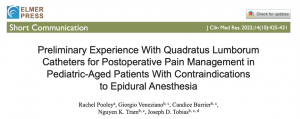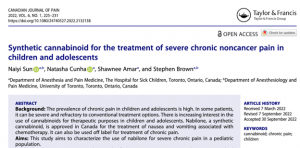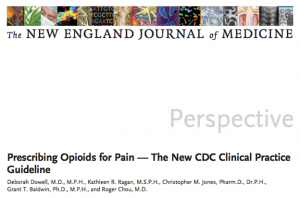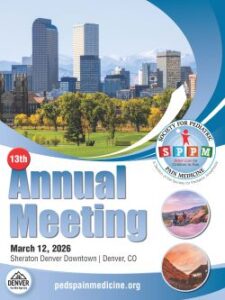
Read more HERE
New Study on Quadratus Lumborum Catheters for Perioperative Analgesia

A case series has been published looking at a preliminary group of pediatric patients who received quadratus lumborum catheters as proxy for epidurals. All catheters functioned successfully and were in place for a median of 79.3 h. Other than early inadvertent removal of two catheters, no adverse effects were noted.
Read the paper here: https://www.ncbi.nlm.nih.gov/pmc/articles/PMC9635806/pdf/jocmr-14-425.pdf
Synthetic Cannabinoid for the Treatment of Severe Chronic Noncancer Pain in Children and Adolescents

A new study published in the Canadian Journal of Pain has shared the experience of one pediatric chronic pain program and their positive experience with the of use of nabilone for pediatric non-cancer pain.
Study can be found here: https://www.tandfonline.com/doi/epdf/10.1080/24740527.2022.2132138?needAccess=true&role=button
Prescribing Opioids in Pain – A Perspective of the New CDC Guidelines

In response to the CDC’s Clinical Practice Guideline for Prescribing Opioids for Pain, perspective letter has been published in The New England Journal of Medicine. The paper provides a summary of the guidelines and also highlights changes that have been made since the last guideline that was published in 2016.
Follow the link to read this paper: https://www.nejm.org/doi/pdf/10.1056/NEJMp2211040?articleTools=true
Question of the Month – December 2022
A 9-year-old female child presents to your clinic with complaints of right ankle pain after having a sprain 9 months ago when she fell during a soccer game. Mother states that the child’s foot often turns reddish purple, and is extremely painful. Since the injury she will only wear sandals as socks or shoes are intolerable. Exam reveals allodynia and hyperalgesia with color and temperature changes involving the dorsal and ventral aspect of the right foot.
After comprehensive consultation with the family and negative work up for any red flags please choose the correct answer. Which of the following is correct?
- « Previous Page
- 1
- …
- 26
- 27
- 28
- 29
- 30
- …
- 51
- Next Page »
 SPPM 13th Annual Meeting
SPPM 13th Annual Meeting